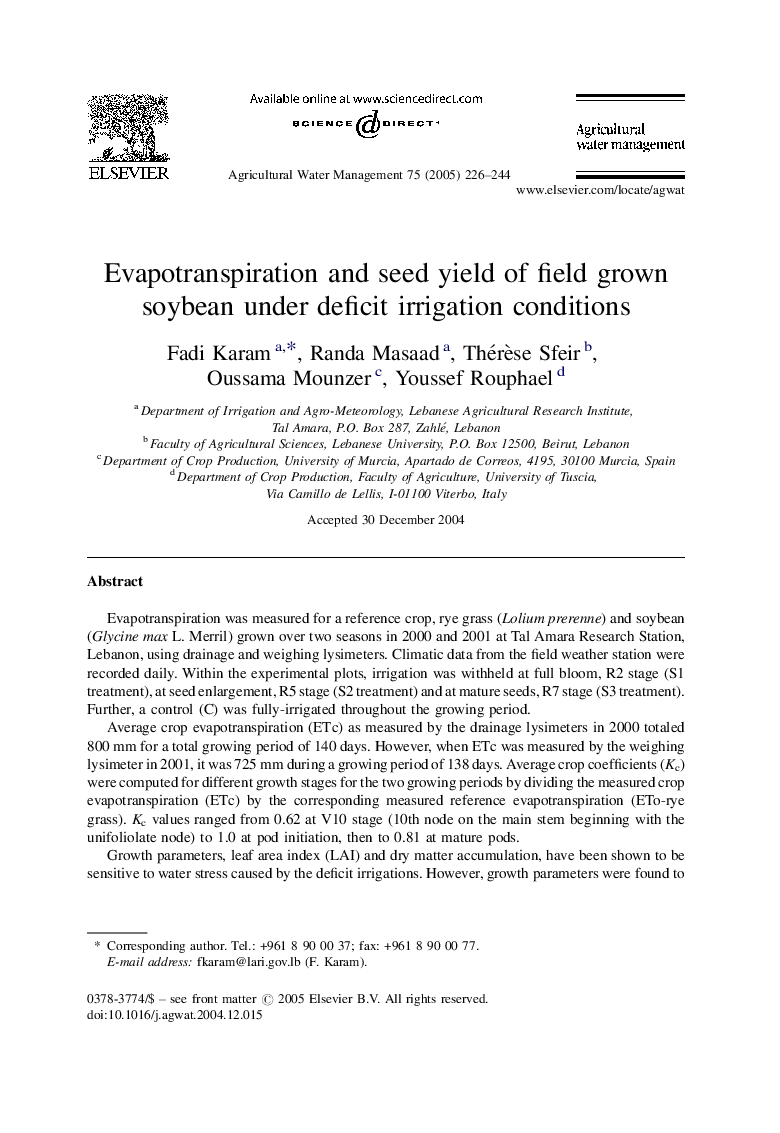| Article ID | Journal | Published Year | Pages | File Type |
|---|---|---|---|---|
| 9467412 | Agricultural Water Management | 2005 | 19 Pages |
Abstract
Plants of the lysimeters produced average aboveground biomass and seed yield of 8.1 and 3.5 t haâ1, respectively. However, in the well-irrigated field treatment, aboveground biomass and seed yield averaged 7.3 and 3.2 t haâ1, respectively. Deficit irrigation at R2 stage reduced aboveground biomass and seed yield by 16 and 4%, respectively, while deficit irrigation at R5 stage reduced these two parameters by 6 and 28%, respectively, with comparison to the control. The significant decrease in biomass at R2 stage due to water deficit may be attributed to a pronounced reduction in the number of vegetative nodes. However, limited irrigation at this stage did not reduce significantly (P < 0.01) neither seed number nor seed weight, while at R5 stage these two parameters were reduced by 20 and 10%, respectively, with comparison to the control. Results showed also that deficit irrigation at R7 stage (S3) was more profitable than irrigation deficit at any other crop phenology and did not cause significant reductions either in seed number or seed weight.
Related Topics
Life Sciences
Agricultural and Biological Sciences
Agronomy and Crop Science
Authors
Fadi Karam, Randa Masaad, Thérèse Sfeir, Oussama Mounzer, Youssef Rouphael,
